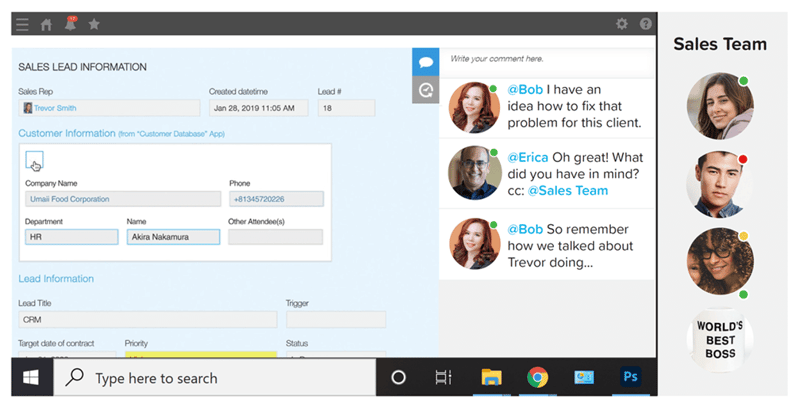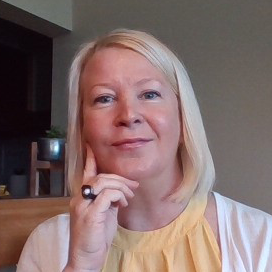Does your team have good communication? It’s a question you should ask often—and don’t dismiss any problems if the answer isn’t “absolutely.” Why? If you do, it will likely cost you.
In a report called “The Cost of Poor Communication” by David Grossman, a survey of 400 large companies revealed that they each on average lost $62.4 million per year thanks to poor communication. And email inefficiency alone can be costly; In her article “The Top Ten Email Blunders that Cost Companies Money,” Debra Hamilton reports that even smaller companies with 100 employees lose $420,000 per year because of inefficient email communication.
But there is one top way to make sure your company’s communication is stellar. In this article, we’ll dive into the challenges most businesses face with team communication and what happens to that communication once the goal is reached. And you’ll discover the number one way to improve communication for long-term, higher productivity and better efficiency.
Challenge the Way Communication is Usually Viewed
Team communication is somewhat like taking a route with different roads to reach a final destination. Maybe it starts on a video call, heads over to an email thread, continues in some texts and phone calls before eventually reaching its conclusion. But then what happens? Does the route matter anymore; does it have value? Traditionally the answer is no…and that’s a mistake.
The end goal in this case is overvalued while placing very little worth on preserving information that was shared along the way. That adds up to major communication inefficiency and lost opportunity.
Here is a fictional example to help illustrate what that inefficiency may lead to. Co-workers Erica and Bob are trying to solve a prospect qualification problem for their sales team. So they hop on a private Slack channel and start brainstorming, eventually (after some emails, texts and phone calls) coming up with a great solution. During their next team meeting, they share how they think the problem can be fixed and their team loves it. Then life moves on, particularly for Erica who goes on maternity leave, and Bob who finds another job.
Then the sales team runs into the same issue qualifying their prospects, but unfortunately, all the communication between Bob and Erica is lost. So now they’ll have to spend time solving the same problem—something that could have been avoided if information about how Erica and Bob solved it the first time had been captured.
The Costs of Not Valuing Your Conversations
From operational inefficiencies to spending more resources on labor, the costs of not managing conversations can add up quickly. Consider these facts:
- Employees send an average of 620 emails a week.
- Many of these emails involve either cc’ing or re-sharing information which, even if it’s shared with others, remains elusive to anyone who is not included.
- Overall, 20% of each workweek is wasted searching for information.
And then there are the “hidden” costs of current communication methods, including:
- Missing a major opportunity to help employees learn and grow from one another.
- Treating conversations as disposable which leads to wasted time replicating efforts or chasing employees down to get the information.
- Preventing employees from being more productive and efficient with their work.
The Value in Seeing Your Communication Just Like Your Data
And now we can unveil that number one way to improve your team’s communication: by capturing, categorizing and sharing it.So how do you do that? Let’s take a quick step backwards and look at the root of a conversation—sharing knowledge—and the two types teams share with each other:
- Standard knowledge: This is the basic requirements/information people need to be able to fill a role. For example, a copywriter should know how SEO works for a marketing campaign and have the ability to share that knowledge with other team members.
- Unique knowledge: This includes insights a person has as a result of combining their standard knowledge with job, life and personal experience. This type of knowledge is unique to each individual, even within a team of people in the same role.
It’s the knowledge that each team member has and shares that makes that communication so valuable to projects and a business in general.
While standard knowledge is the bedrock of being able to do any job competently, it tends to be easier to identify and replace, but unique knowledge isn’t. And 42% of any employee’s knowledge is unique, meaning that if they leave that’s the portion of their job no one else can fill until someone is hired and trained to do it from scratch. Also, it's the unique knowledge that makes employees dependent on each other. In fact, they spend an average of five hours a week waiting for unique knowledge to be shared with them in order to do their own jobs. And employers understand the “unique” problem with 81% saying unique knowledge is the hardest to replace.
And employees love sharing their knowledge every day in communication channels—which is exactly where you can capture and learn from it. That’s a goldmine with each employee interaction becoming an opportunity to capture knowledge and use it to help train, educate and make team members more efficient and productive.
It should be clear to you now: your communication isn’t nearly as disposable as you think. In fact, there’s actually a massive opportunity available to you when you see the value of your conversations. So—if you want your team’s communication to become more streamlined, efficient, and productive in the long run and make it much easier to get new employees up to speed—value and capture your conversations.
Not sure if you’re valuing your communication?
See if any of the following apply to your organization:
- Conversations are hard to access/review
- Multiple collaboration tools are used
- Many conversations are “invisible”
- Employees often answer the same questions
- Teams rely on memory to know when a problem has occurred before and if there is an existing solution
- Conversations aren’t searchable by topic
Capturing Conversations With Collaboration Tools
Now that you can see the true value of your conversations, let’s dive into how to improve your team’s communication.
To successfully begin to capture and capitalize on all the unique and useful knowledge employees share every time they work together, you’re going to need a process that has two things:
- Centralized communication channels: Conversations need to have one designated space (there are too many chat tools e.g. email, Slack, text and more to keep up with)
- Accessible communication: Conversations must be visible to other team members (especially for people not having the conversation) so you’ll need to say goodbye to your siloed systems.
Going back to Erica and Bob, let’s see what a valued conversation looks like—one that has been captured as they worked to solve their prospect qualification problem. After they’ve left the company, their former co-workers will be able to easily access and learn from it.
It’s centralized: Using collaboration tools, Erica and Bob’s conversation in a chat room sit alongside their updates and details about the steps they’re taking to solve the problem—so it’s all in one place.
It’s accessible: They aren’t working in a siloed way, anyone on their team is welcome to take a look at what they’re doing at any time.
And when their conversation happens in the same channel where data is stored, it becomes data. See the example below.

Using collaboration tools, conversations are:
- Visible to everyone
- Easy to search for
- Linked to your data
- Kept in one or just a few channels
- Organized and filed per topic
- Recorded and documented
Don’t Let Any Form of Poor Communication Cost You
It’s clear that disposing conversations as soon as their destination has been reached harms a team’s communication—and wastes time and effort. Also, it has a good chance of harming the morale of any team. But when you treat conversations like the data mines that they are, teams (with easy access to them) learn and build on each other’s knowledge—saving time, frustration, and knowledge loss.
But having the right software to do it all is crucial. Armed with the best tech will help you accomplish two of the key things: centralizing conversations and making them accessible, so they can live side by side with your other data.
See how Kintone can easily and effectively organize all of your team’s communication.
About the Author
Kristy is a writer living in Atlanta, Georgia where she works, plays and explores life. When it comes to writing, she’s pretty much dabbled in nearly every form—she penned her first published piece, a poem titled “What’s in a Name,” when she was in grade school—she finds it ironic that she has forgotten peoples’ names all her life. When she isn’t moving her fingers on a keyboard, she’s likely enjoying time with friends, playing tennis or spoiling her 10-year-old Scottish Fold cat, Cash.










